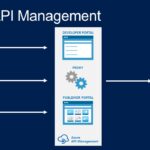In today’s highly competitive market, customer satisfaction and retention are critical for the success and growth of any business. With the rise of technology, customers have come to expect personalized experiences that cater to their specific needs and preferences. This is where hyper-personalization comes in. Hyper-personalization involves capturing real-time data and using it to provide customized solutions and experiences. The financial sector, in particular, has seen significant benefits from hyper-personalization, with financial institutions using it to improve customer satisfaction, offer tailored investment advice, and enable faster decisions. In this article, we’ll explore how hyper-personalization is driving success and growth for fintech startups, with a particular focus on the brokerage industry. We’ll also discuss the role of technology in driving hyper-personalization and how it is transforming the way financial institutions interact with their customers.
What is Hyper-Personalisation?
Have you ever noticed how some companies seem to know exactly what you’re looking for, even before you do? That’s hyper-personalisation at work!
In simple terms, hyper-personalisation is when companies use data and technology to create highly individualised experiences for their customers. Fintech startups, in particular, use hyper-personalisation to understand customer behaviour and preferences, and then tailor their products and services to meet the unique needs of each customer. Think of it like a personal shopper who knows your style, size, and budget, and can recommend clothes that they know you’ll love. Fintech startups are doing the same thing, but with financial products and services.
Hyper-personalisation is important because customers today expect a high level of personalisation in all aspects of their lives, including their interactions with financial services. By offering personalised experiences, Fintech startups can create a loyal customer base and stand out in a crowded market.
How is technology driving Hyper-Personalization?
Thanks to advancements in technology, companies can now collect and analyze vast amounts of data about their customers in real-time. This data includes everything from customer demographics to their purchasing behaviour and preferences.
By using predictive analytics, artificial intelligence (AI), and automation, companies can take this data and develop personalized and targeted experiences for their customers. For example, a fintech startup might use AI to analyze a customer’s spending habits and then offer customized investment advice based on that data.
In the financial sector, hyper-personalization is becoming increasingly important as traditional financial institutions face competition from technology-first companies. Today’s customers want personalized products and services that cater to their specific needs and interests. Financial institutions are responding by focusing on frictionless product design, tailored investment advice, faster decision-making tools, and strategic communication and customer service plans. By doing so, they can ensure customer-centricity and future-proof their organization.
To achieve this level of personalization, financial institutions are leveraging transformative technologies such as natural-language processing and voice analytics. These tools allow them to capture and analyze customer interactions across all channels, including phone, in-person, and online. This data-driven approach enables financial institutions to better understand and anticipate changing customer demands.
What could this look like for the Brokerage Industry?
Hyper-personalization has a lot of potential in the brokerage industry, and it can significantly improve customer satisfaction. Brokerages offer trading applications that allow users to transact in the financial markets through mobile or web-based platforms. Market data and customer data are the two primary forms of data that can be used to create a hyper-personalized experience for the users.
Market data includes trading information such as stock prices, volumes, and order histories, company fundamentals such as earnings, dividends, and margins, and news and insights such as economic and company news and analyst research reports. Brokerages can use this data to provide relevant and actionable insights to users, making it easier for them to manage their investments.
Customer data, on the other hand, includes demographic information, trading history, and in-app activity history. By segmenting customers based on skill level and activity level, the trading experience can be completely customized. For novice investors, the app can provide a lot of guidance and educational material to learn the trading domain. The user interface can be dynamically changed to show the stock details in a simpler way without using a lot of technical jargon. The app can highlight low-risk, low-reward stocks to build users’ confidence and encourage them to continue their journey.
For intermediate investors, the trading app can provide curated insights on their existing portfolio. Based on customers’ current holdings, personal in-app history, and similar customers, potential investments can be highlighted along with business cases for and against those opportunities. This can help users cut through the clutter of thousands of potential investments and make more informed decisions.









